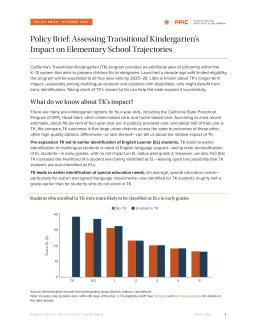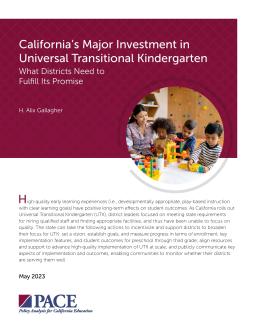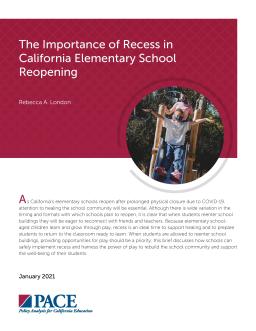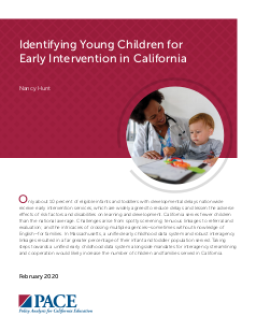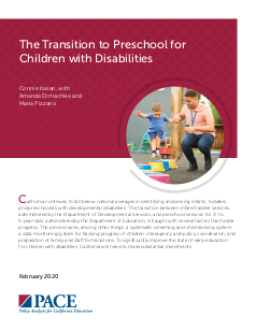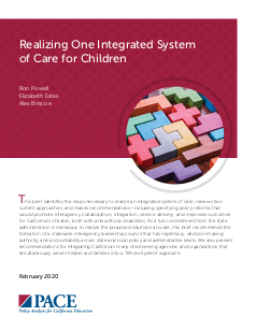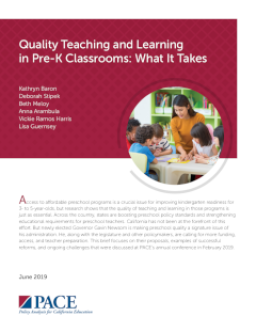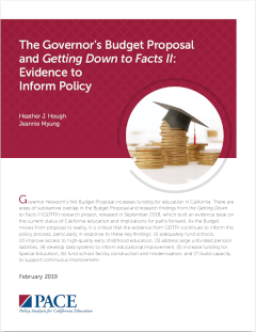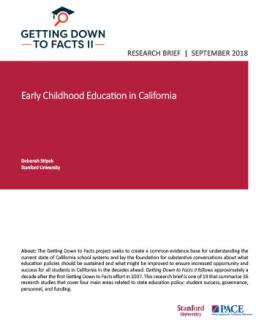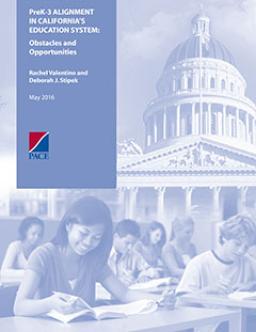Summary
Summary
Summary
Summary
Summary
Only 10% of eligible infants and toddlers with developmental delays nationwide receive early intervention services, and CA serves fewer children than the national average. This is due to challenges such as spotty screening, tenuous linkages to referral and evaluation, and crossing multiple agencies. Massachusetts has a unified early childhood data system and robust interagency linkages, resulting in a greater percentage of their infant and toddler population served. Implementing a unified data system and interagency streamlining in CA could increase the number of children and families served.
Summary
California is failing to identify and serve infants, toddlers, and preschoolers with developmental disabilities compared to national averages. The transition from infant/toddler services to preschool services is hindered by various factors such as the lack of a systematic screening and child tracking system, interagency coordination, and family/staff preparation for transitions. Significant investments are required to improve the state of early education for children with disabilities in California.
Summary
Summary
Governor Newsom has proposed initiatives to support children under 5, but California voters prioritize K-12 education and college affordability over early education. Despite evidence that high-quality early education has a powerful impact on children’s future success, more active engagement by the Governor and his allies may be necessary to build public support for expanding access and improving the quality of early education programs.
Summary
Summary
Governor Newsom’s first Budget Proposal increases funding for education in California. There are areas of substantive overlap in the Budget Proposal and research findings from the Getting Down to Facts II (GDTFII) research project, released in September 2018, which built an evidence base on the current status of California education and implications for paths forward. As the Budget moves from proposal to reality, it is critical that the evidence from GDTFII continues to inform the policy process.
Summary
California has over 3 million children ages 5 and under, with a large proportion living in poverty or with non-English-speaking parents. Quality early childhood education is important for future success, but the state system is marked by low wages, inconsistent standards, and insufficient monitoring. Child care is expensive and doesn't meet the needs of nonstandard schedules. California has a large proportion of children in care with no standards, and identifying young children with disabilities is inadequate. There is no centralized data collection system for evaluating improvement efforts.
